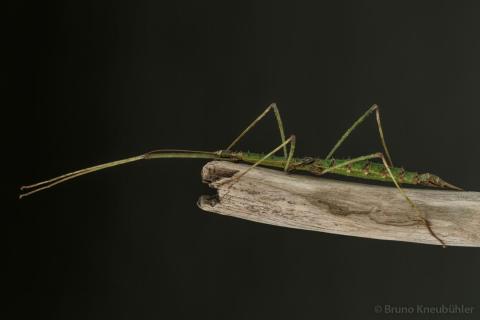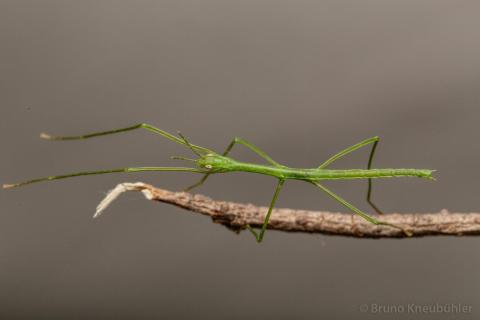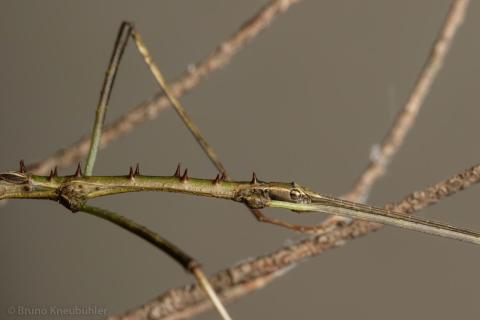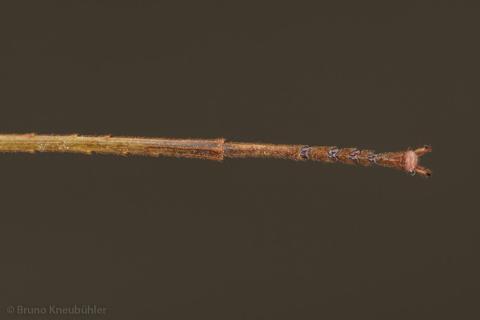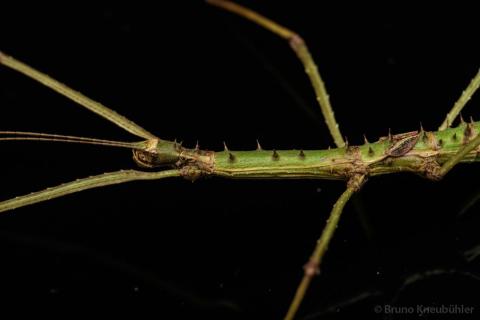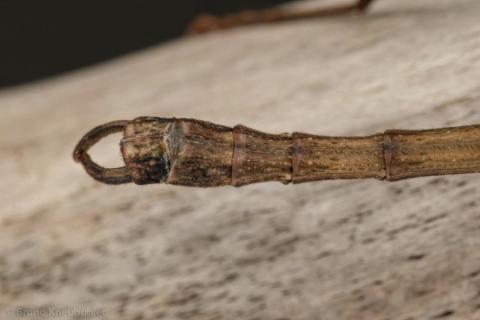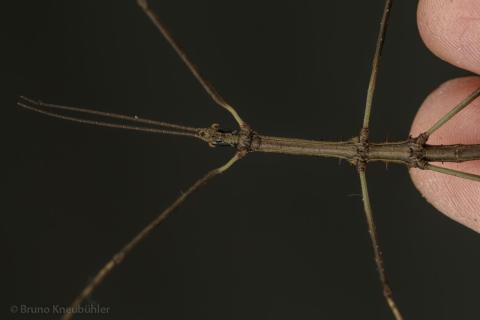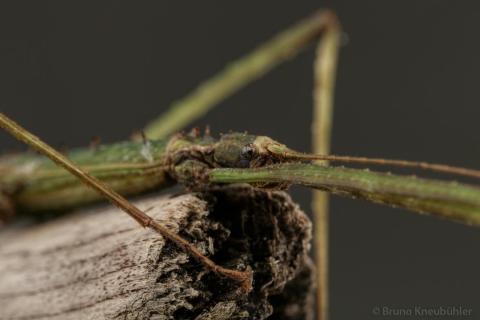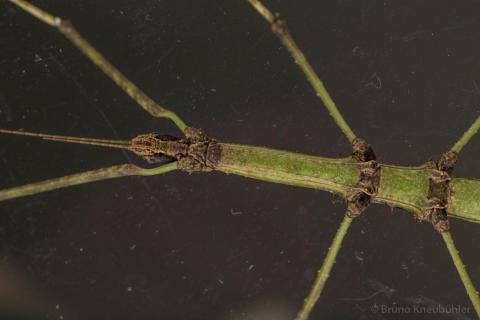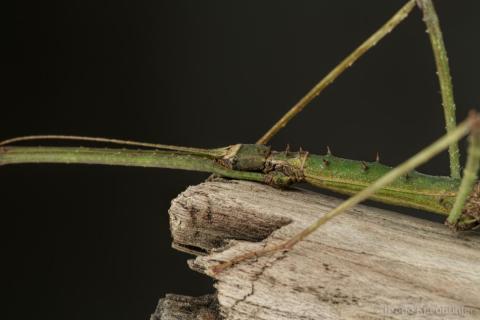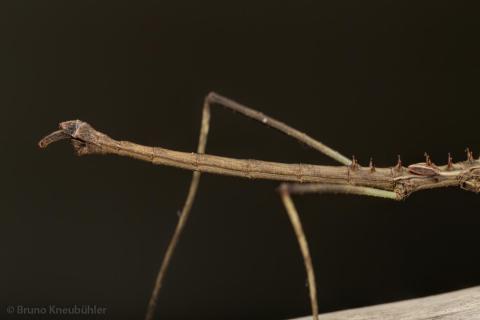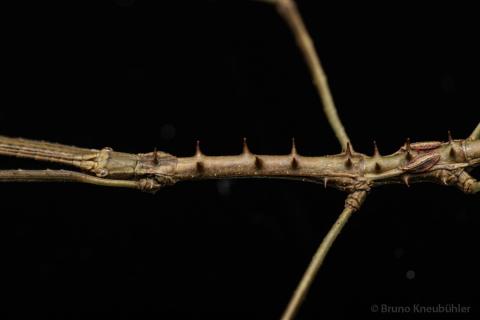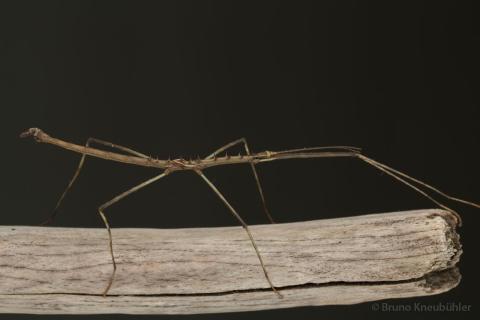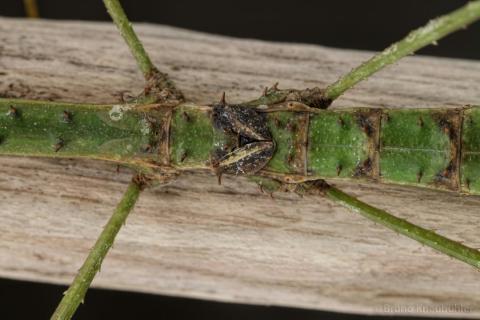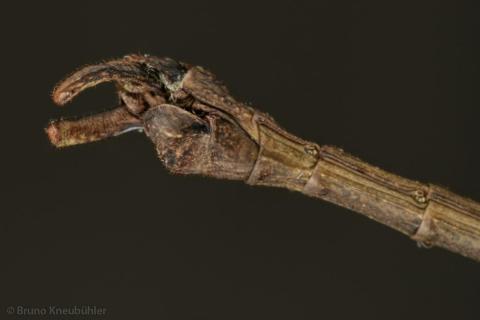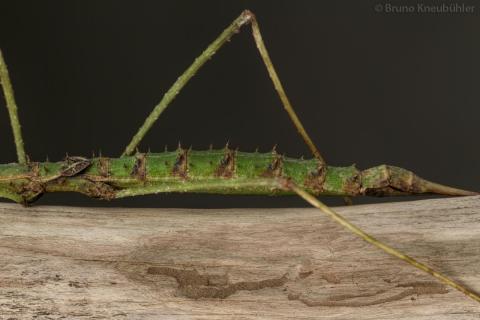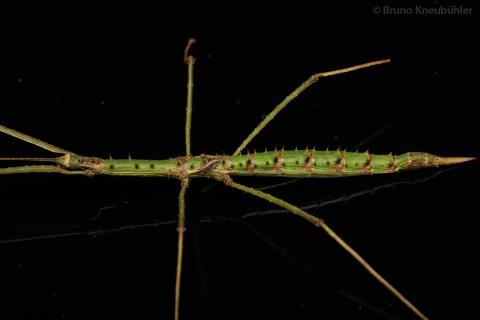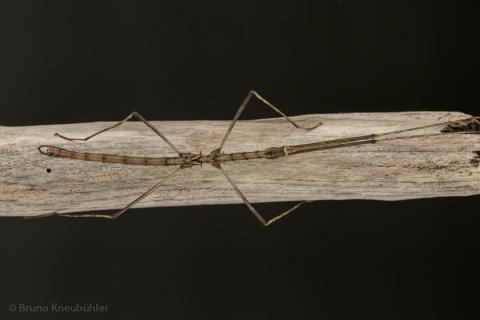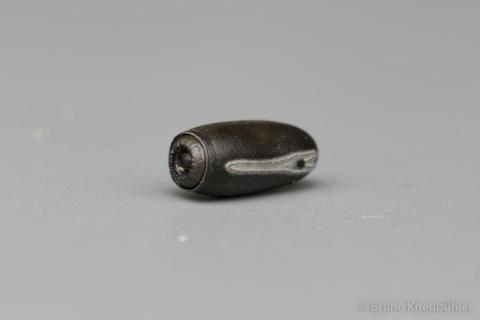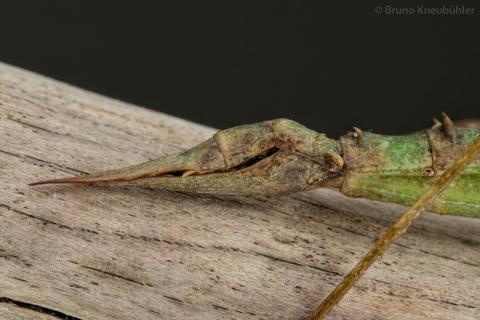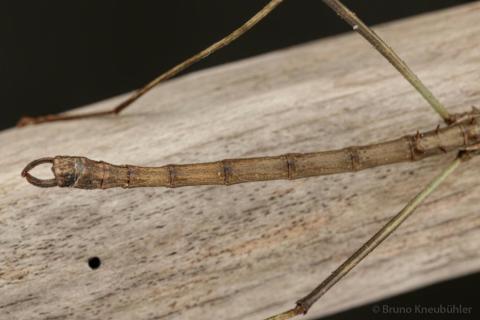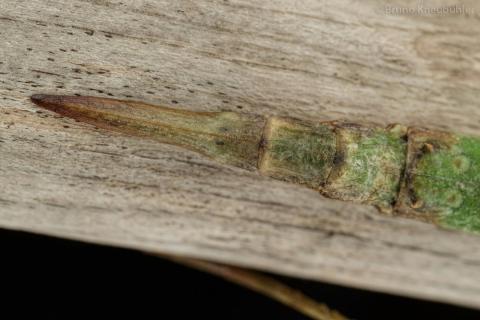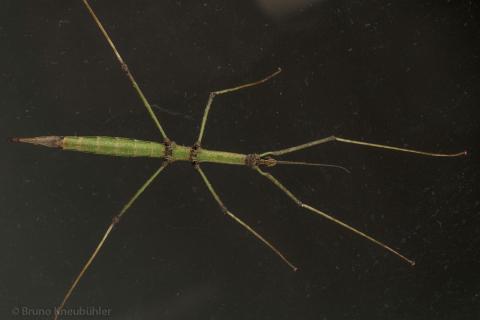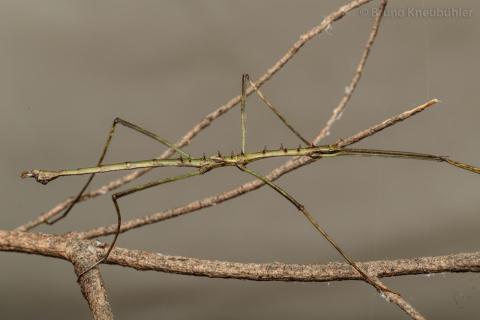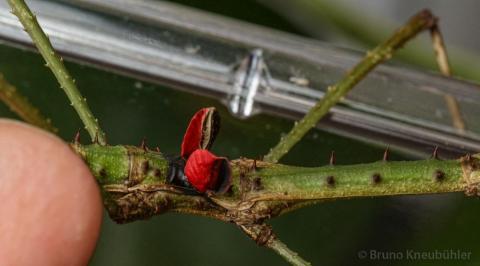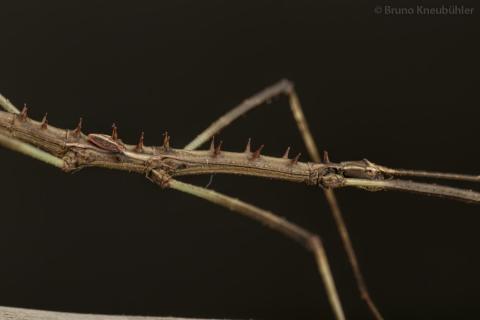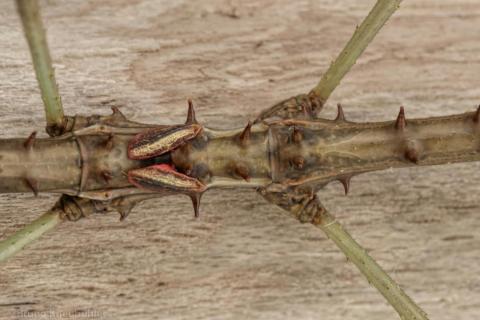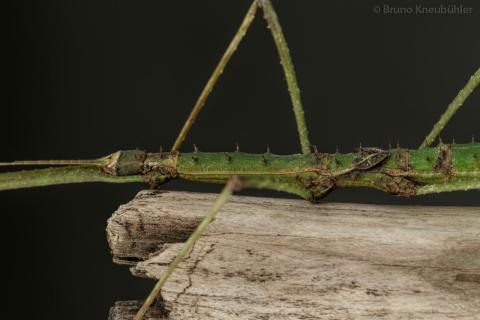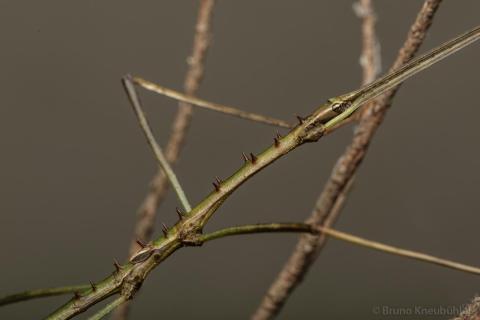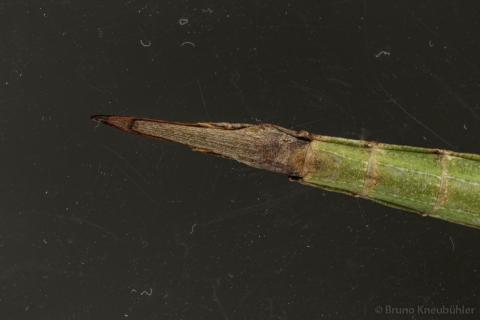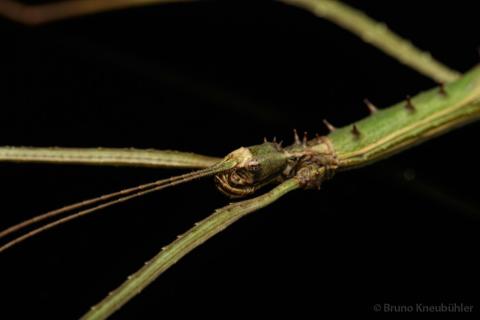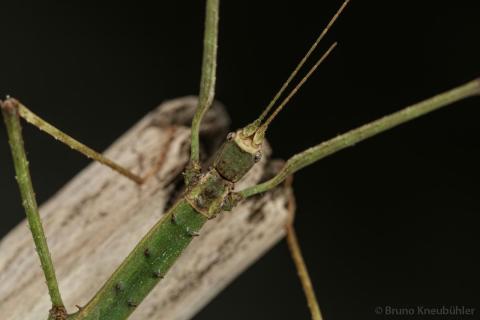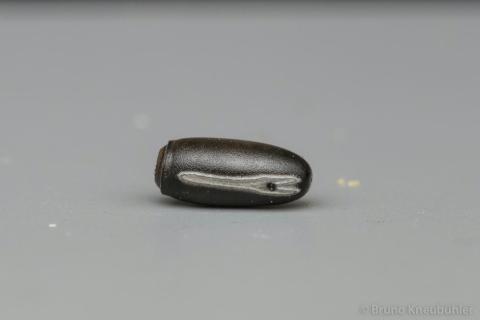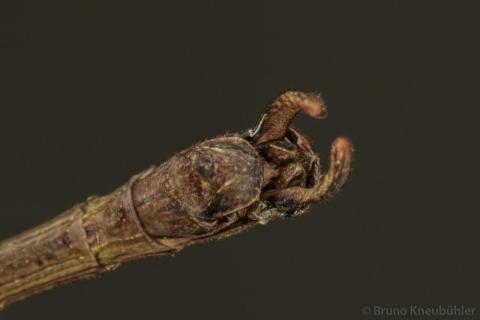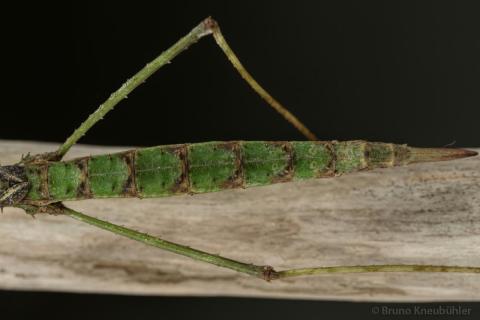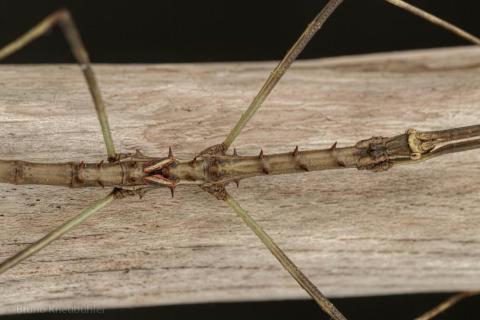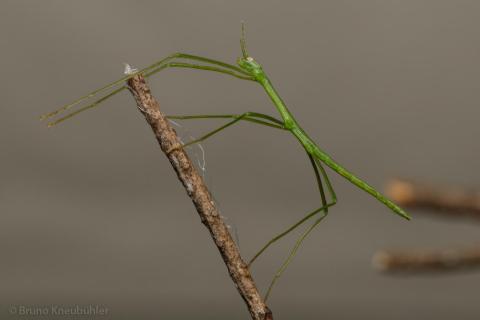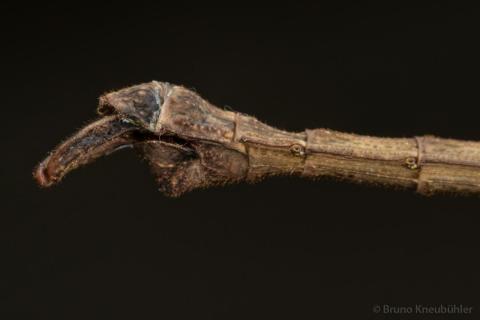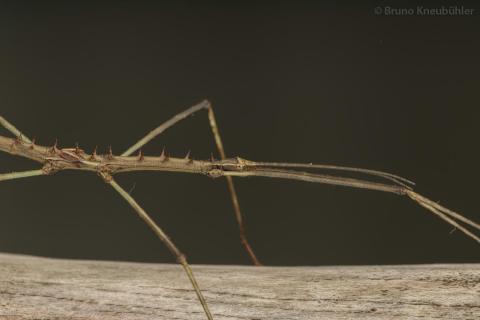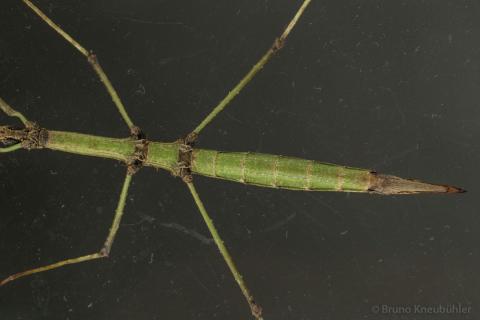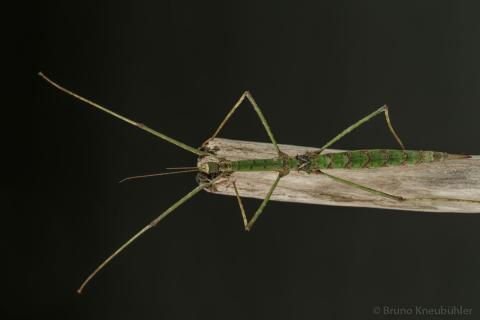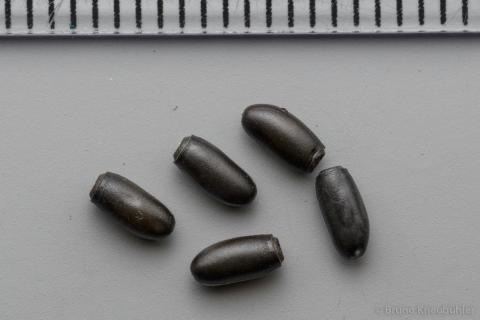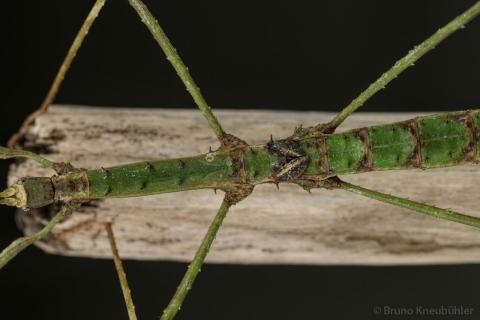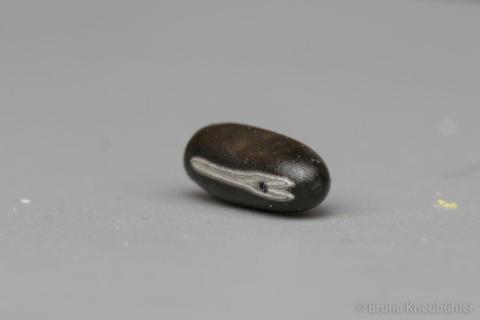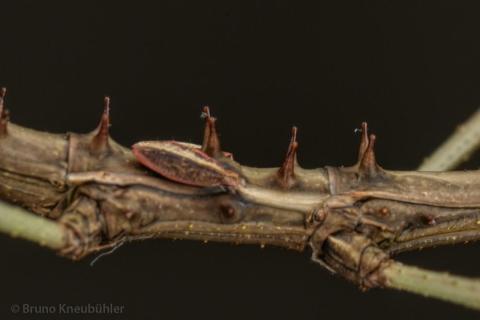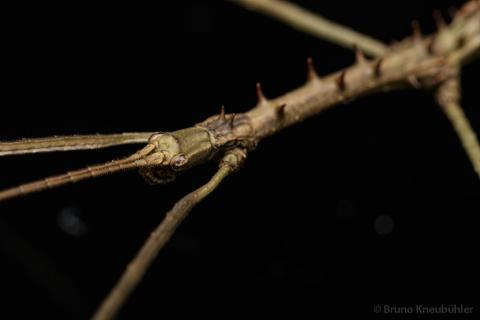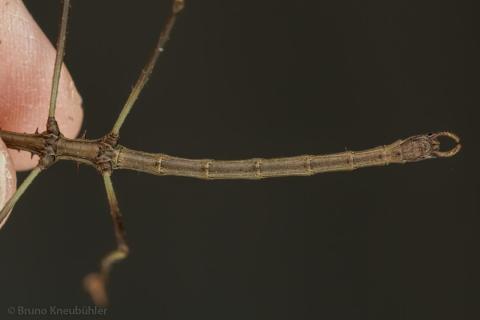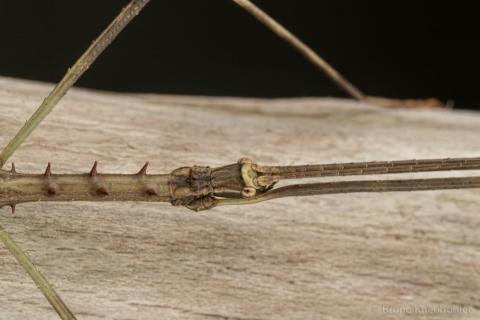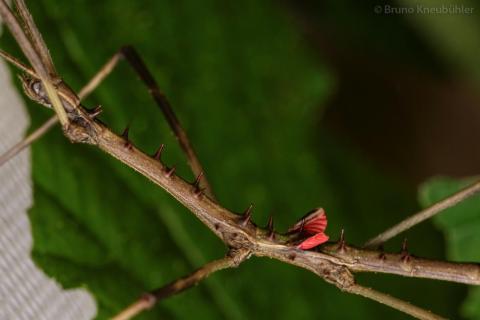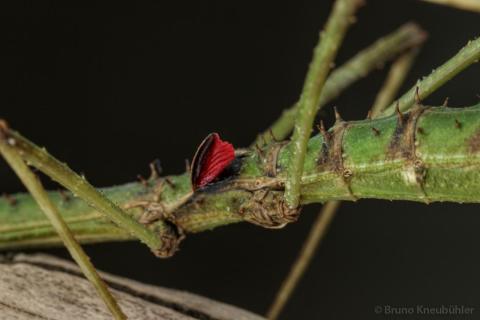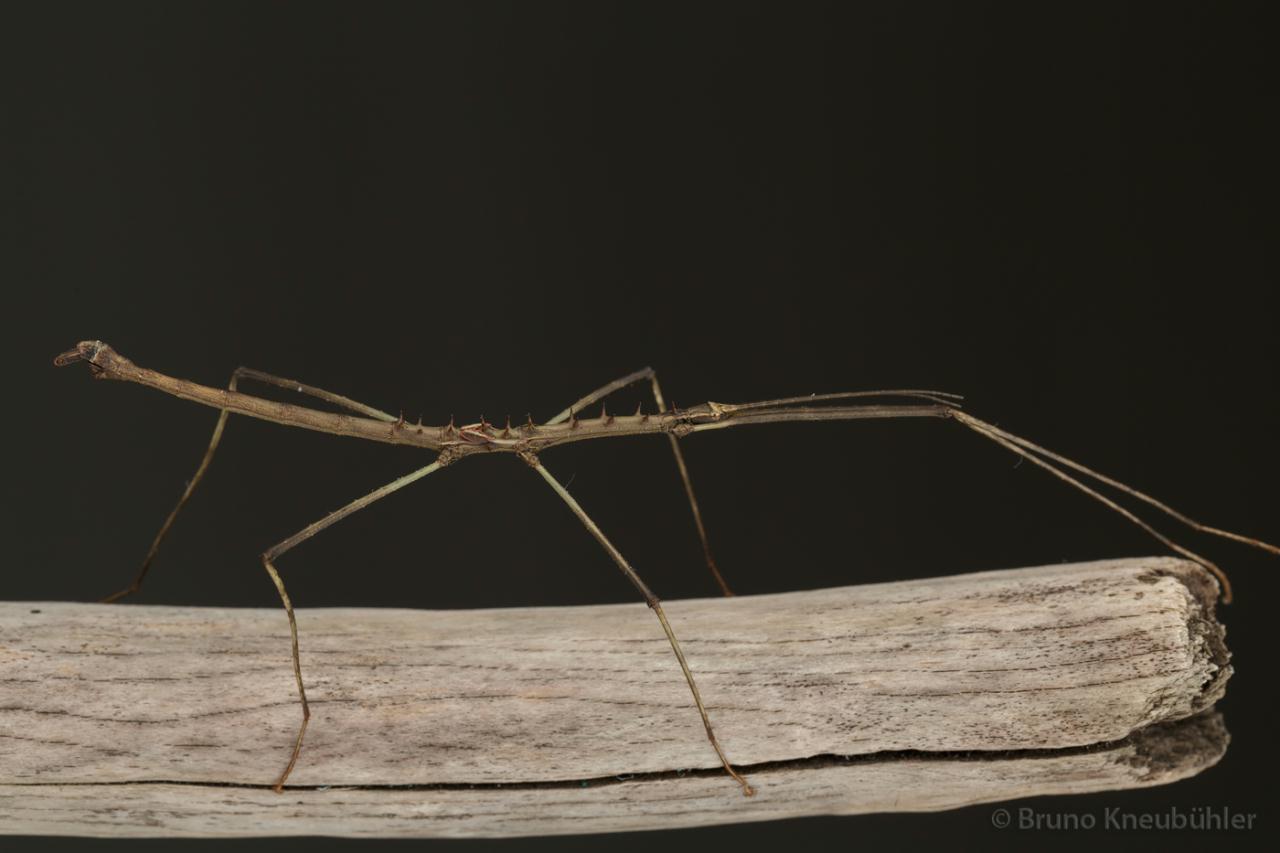
Genus
Species
Stock
CLP
658
Culture status
Unknown
Foodplants
Bramble (Rubus spp.)
Hazel (Corylus avellana)
Salal (Gaultheria shallon)
Beech (Fagus sylvatica)
Breeding notes
Asprenas sp. "microwings, Koghi"
(by Bruno Kneubuehler)
General Informations
- formery this cultures was known as Asprenas sp. "microwings, Koghi"
- ID by Frank Hennemann (DE)
- provenience: Mt. Koghi (New Caledonia)
- different phasmid taxonomists suggest that this might be Asprenas effeminatus Carl, 1913, but a definite ID is not yet available
- F1 CB culture by Bruno Kneubuehler (2014)
- further taxonomical informations ➤ phasmida.speciesfile.org
- this is a pure culture, and serious breeders will avoid mixing it with cultures of a different provenience
Females
- medium-sized, long-legged, spiny species
- body length 10 cm
- green with brown patches and white dots
- black cheeks
- several long spines on the upper body
- long legs
- short hindwings
- inner side of hindwings red
- long secondary ovipositor
Males
- slender, spiny
- body length 6 - 7 cm
- several long spines on the upper body
- black cheeks
- short antennae
- verye short hindwings
- inner side of hindwings red
Nymphs
- freshly hatched nymphs are dark brown (legs, head, pro- and mesothorax) and red (metathorax, abdomen)
- coloration of these nymphs are distinctively different from nymphs of other Phyllium species
- on how to distinguish between male and female nymphs
Eggs
- 5 x 2.5 mm
- black
- shiny, smooth surface
- white micropylar plate
Food Plants
- bramble (Rubus spp.)
very well accepted by nymphs and adults - hazelnut (Corylus avellana)
very well accepted by nymphs and adults - Salal (Gaultheria shallon)
very well accepted by nymphs and adults - beech (Fagus sylvatica)
very well accepted by nymphs and adults
Breeding, Behaviour
- active mainly during the night
- they often drop to the ground when being touched, and freeze up again after a just few steps
